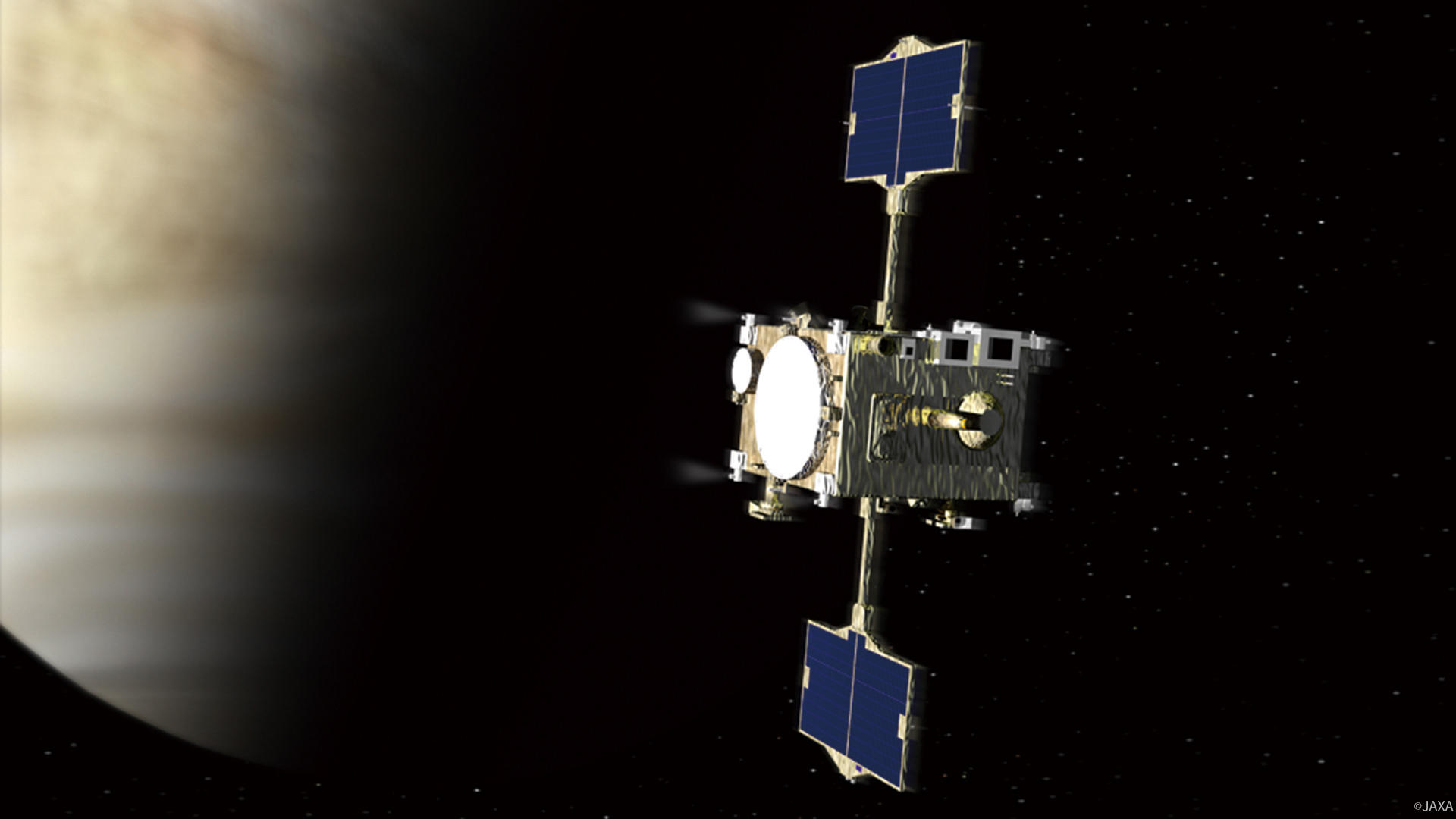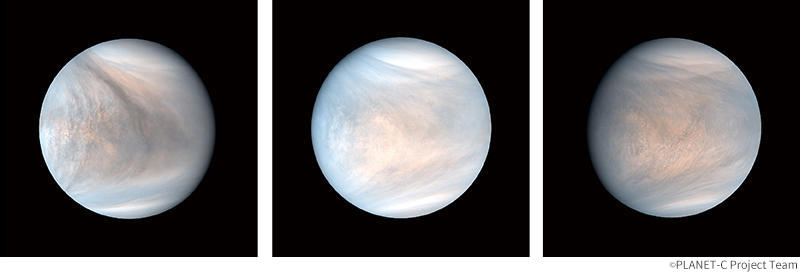
Institute of Space and Astronautical Science (ISAS)

Venus Climate Orbiter "AKATSUKI"
Seeking to Unravel the Mysteries of Venus
Using five cameras to capture images of Venus as never seen before
Venus is known as Earth's sibling planet because it is of a similar size and weight. Explorations on this planet started in the 1960s, with the United States and the former Soviet Union sending out probes, one after the other. What these studies showed was a sight that is completely different from that of Earth. The surface on Venus has high temperatures with no ocean, and is covered by thick clouds made of sulfuric acid. The atmospheric flow on Venus is particularly unique, and it was discovered that strong wind blows constantly at a speed of 100 meters per second in what is known as super-rotation.
The Venus orbiter "AKATSUKI" was launched in 2010, with researchers at JAXA, universities and other research institutes working together to unravel this mystery on Venus. Observations by this probe started in 2015. Professor Takeshi Imamura of the Graduate School of the University of Tokyo, who is a core member of this project, says that the greatest feature of AKATSUKI is that "it is able to photograph the entire planet of Venus over a long period of time, with hardly any interruptions, by using cameras capturing different wavelengths such as infrared and ultraviolet rays."
"There are no previous examples of such a planetary probe. Because of this, we are able to visualize the fluid motion of the entire planet, and make new discoveries of various meteorological phenomenon, thus allowing us to acquire information that may help us explain the mechanism behind the super-rotation."
Revealing an animation that displays large-scale clouds

Composite and colored renditions of images captured by the ultraviolet imager (UVI) loaded on AKATSUKI. UVI is a camera that uses ultraviolet rays to capture such factors as sulfur dioxide.
In March 2019, an animation that continuously captures the atmospheric flow on Venus was made publicly available through the official site for AKATSUKI. This animation was made by creating a composite of the images taken from the ultraviolet ray camera on AKATSUKI, with simulated colors added on to those images. Because of the super-rotation, clouds flow from the right (east) to the left (west), no matter what the location is, and a massive dark area can be seen moving along this flow as it changes its shape. The reddened areas have sulfur dioxide which is what causes the sulfuric acid clouds, and the bluish areas have many unknown chemical substances that create a yellowish hue that is unique to Venus. The clouds, born near the equator, are spread to the north and south polar regions as they are stretched in the north-south circulation, which is a phenomenon that is not seen on Earth.
Various achievements were made by the creation of this animation.
"We're able to see how atmospheric waves, of a scale of tens of thousands of kilometers, spread and affect the atmospheric circulation. This may be the cause of the super-rotation. And by seeing how sulfur dioxide wells up from the equatorial area, and how the created clouds flow as they change shape, this may help us understand the mechanism behind the formation of the unbroken mass of thick clouds covering Venus. In the future, we may be able to discover new atmospheric phenomenon by performing various image processing to these types of video images."
As the study progresses, the probe is coming closer to realizing the main goals from the start of this project, which are to discover the mechanism of the super-rotation and to solve the meridional circulation (average circulation in the north-south and up-down directions). The project will be able to announce a number of major findings soon.
If we could unravel the mysteries of Venus, we will be able to establish a more universal study of planetary meteorology. And it will also give us hints to discovering why Earth's atmosphere is the way it is today, and what will happen to our atmosphere in the future. Learning about Venus is also a path that leads us toward learning about Earth.
Profile

|
|
|---|
- Home>
- Global Activity>
- Public Relations>
- JAXA’s>
- JAXA's No.77>
- Venus Climate Orbiter "AKATSUKI" Seeking to Unravel the Mysteries of Venus